Juniper: description of species and varieties, planting and care features
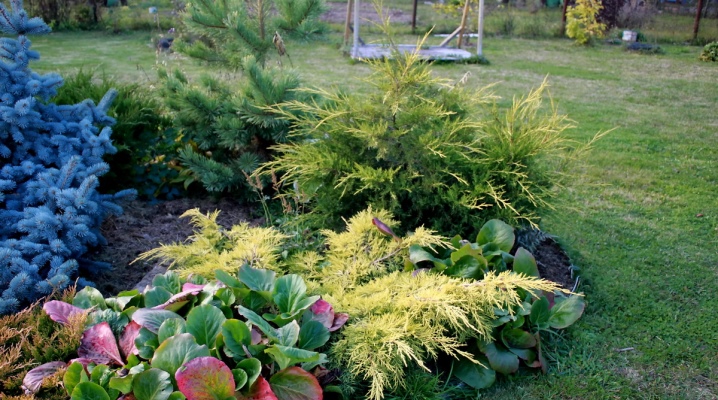
When the conversation comes about coniferous crops, everyone remembers spruces, pines, cedars. But a juniper can be no less beautiful addition to a garden and a summer residence, a local area. You just need to approach his choice skillfully and competently.
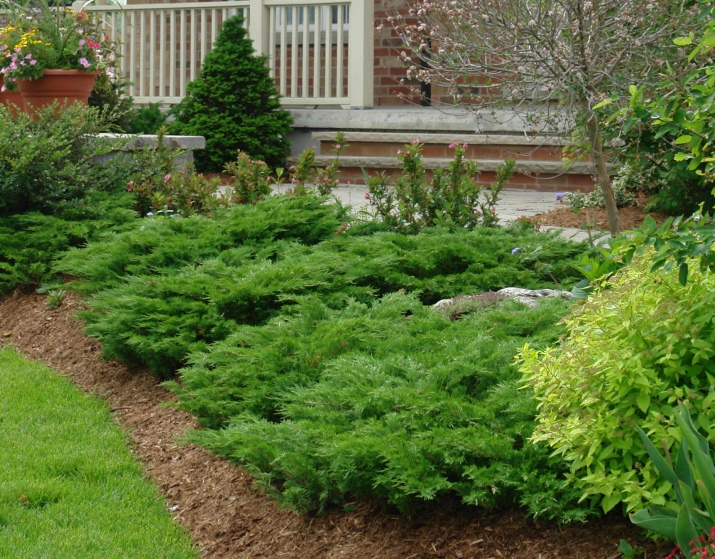
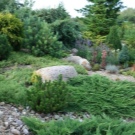
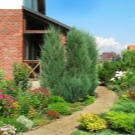
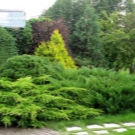
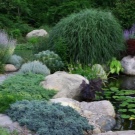
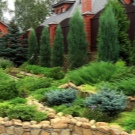
Description
What does it look like?
Getting acquainted with this coniferous plant, like with any other, it is useful to start with the answer to the question of how it looks. This will allow not only to exclude deception when buying seedlings, but also to recognize a clearly painful appearance in time. Juniper is not just one variety, but a whole genus. It can be either a tree or a shrub. Its characteristic feature is needle-shaped evergreen leaves.
Sometimes botanists talk about a linear-lanceolate foliage. But this only applies to adult junipers.
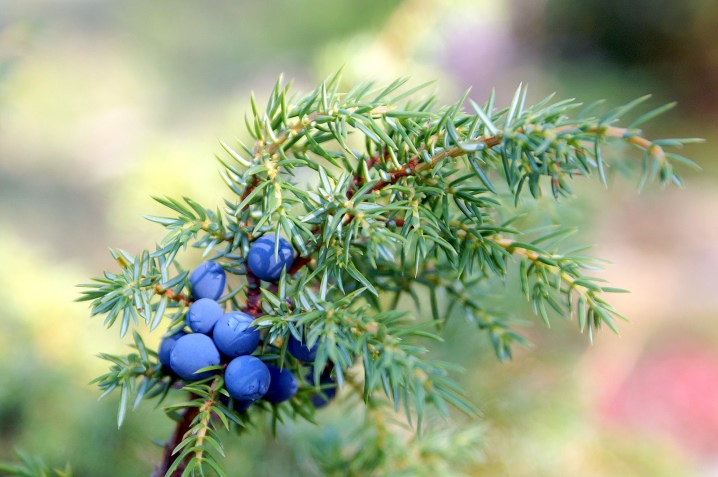
In a young shoot, the so-called pine-like leaves are formed. The buds of a juniper tree either have no scales at all, or have stone-like scales. The cones of this plant also deserve attention - these are rounded cones that are unable to open; each of them hides 10 seeds.


How fast it grows
The lifespan of a juniper is very long (but more on that later). Therefore, gardeners and landscape designers do not have to rely on the fact that it is growing rapidly. But from adult seedlings, you can easily create a lovely hedge. It is impossible to determine exactly how soon a tree or bush will grow. The rate of development of different varieties can be very different.
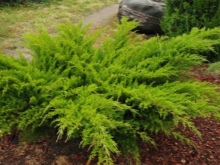


Thus, a Chinese juniper can grow by 0.2 m per year in favorable conditions.Its highest recorded height is 3 m. Virginia variety "Gray Oul" is capable of adding a maximum of 0.1 m per year and grows to a height of 2-3 m. These figures are achievable only with good care. Therefore, those wishing to see a tall juniper will have to make serious efforts.
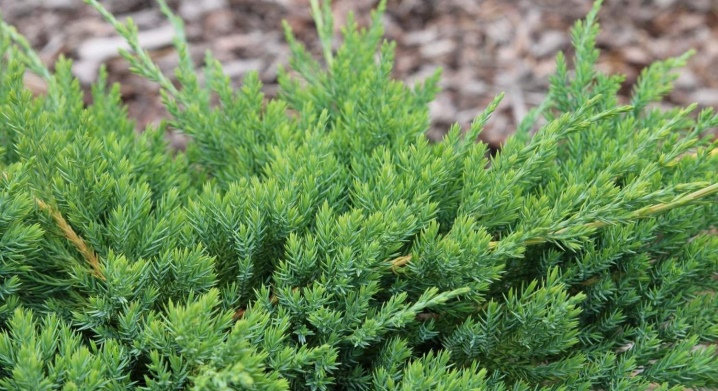
Life span
The question of how many years a juniper lives is also very important for any gardener, both an amateur and a professional. This culture is a recognized long-liver. Instances have been recorded that have lived for 200 or even 300 years. The needles can remain viable for up to 3-5 years when separated from the original tree. But one must understand that the exact indicators depend both on the specific variety of junipers and on the growing conditions created for them.

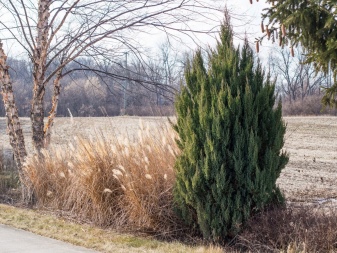
Features and sizes of the root system
The conversation about the root system of the juniper is very interesting. It suffices to point out that unlike such a popular coniferous tree as spruce, it takes root quite powerful, differing in strength... This circumstance allows, among other things, the formation of new growths throughout the life of the plant. But you need to understand that all the roots grow near the surface itself. The shallow, fibrous root system deserves careful handling - otherwise the plant may die.
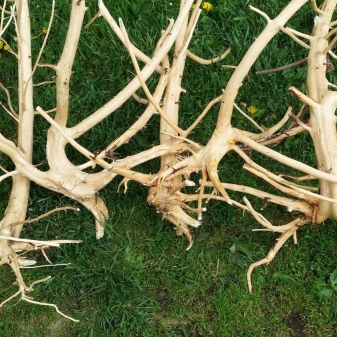
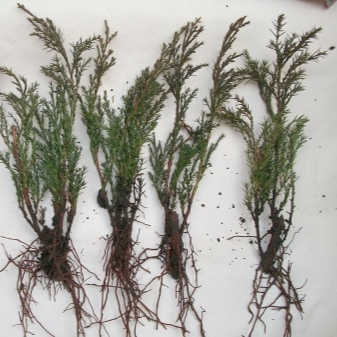
In addition to private sections, it is appropriate to give a general description of the popular coniferous culture. The origin of its name is of interest.
In Slavic languages, it goes back to the old verb meaning "to weave, knit".The Türkic peoples call the juniper archa, and the term "veres" is sometimes used in botanical literature.
The genus includes over 60 species, mainly inhabiting the mountains of the temperate zone. The same species can vary greatly depending on the surrounding situation. Usually in the mountains there are creeping subspecies, and in low places, the arboreal and bush type. Needle leaves, often identified with needles, can be very different. Varieties within the same species sometimes have the most diverse leaf structure.
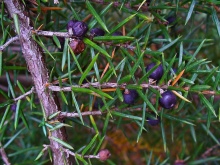
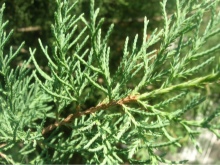
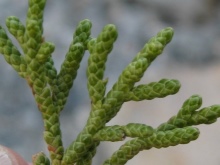
Almost all junipers are dioecious, which makes it possible to grow tapeworms without significant problems. Juniper fruits belong to the group of cones. They should ripen in the second year, but sometimes they form during the first season. It is customary to divide junipers into 3 main groups:
Sabina (this includes many varieties demanded by gardeners);
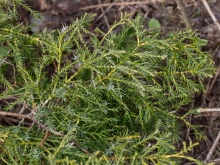
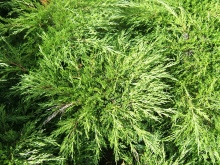
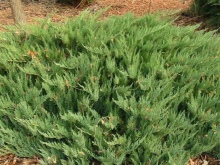
Juniper proper;
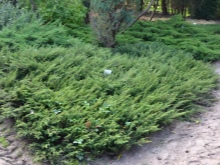
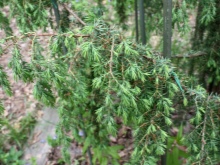
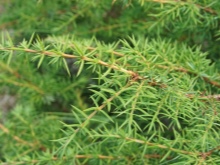
Karyocedrus (including Shrub junipers are often found in the mountainous areas of southern and central Europe. At the junction of the forest and the Alps, you can see wide thickets of such plants. Woody species are found mainly in the Central Asian and Central Asian mountains. They are characterized by resistance to sudden changes in temperature. However, this does not guarantee them. successful cultivation in the harsh climates of the northern regions, since such resistance is associated with intensive aeration of rocky slopes (there is only one stone juniper).
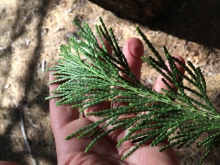

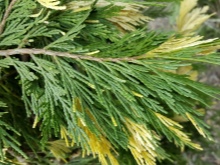
Quite often, inexperienced gardeners are interested in how exactly the juniper differs from heather.
The answer is very simple - despite the name "heather", it belongs to the cypress family, and heather is a member of the heather family (being the only genus in it). The biological similarity between these plants can only be seen in the fact that both of them do not shed their foliage for the winter. The aroma of juniper plants deserves special attention.
It is due to the unique composition of essential oil. It contains a number of the most valuable vitamins. The aroma of the oil mixed notes:
astringency;
spices;
fire smoke.
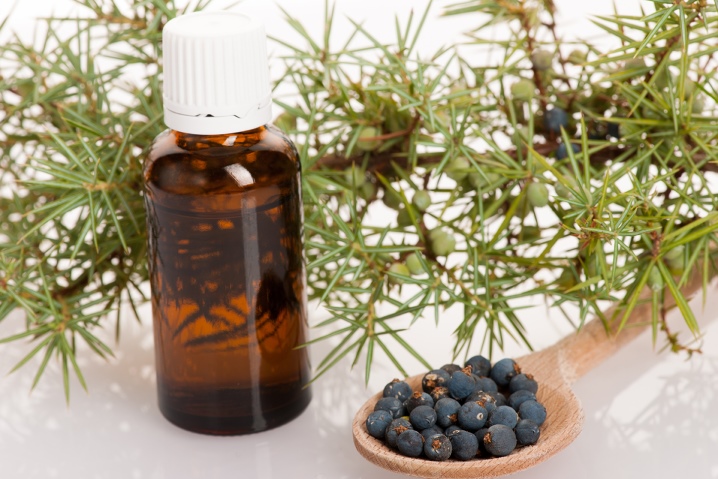
Types and varieties, their shades
It would be quite appropriate to start the review with a forest juniper. It is not without reason that this pleasant plant is called "northern cypress". Strictly speaking, this is not one species, but a whole selection of varieties. Among them there are both shrub forms and tall trees. The characteristic feature is the highly decorative top and the fruit, which contains a large amount of essential oils.

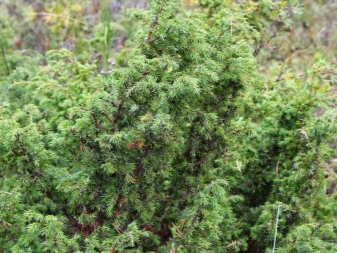
In forests, juniper can be found in the undergrowth and in clearings. (including in clearings). Sometimes this type is found in the mountains. But just taking the first plant that comes across and planting it in the garden would be a rash act. The common juniper is a species notable for the fact that it has the widest coverage in nature among the cypress family.
It can be planted on any kind of land, in hot and cold climates, in the shade and in the bright sun, in a group or singly.
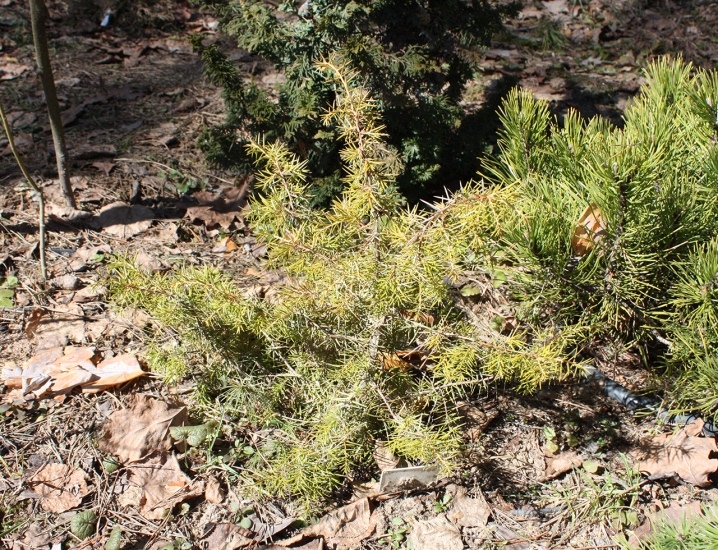
Common juniper can be divided into:
pyramidal;
drooping;
spreading widely;
creeping variety.
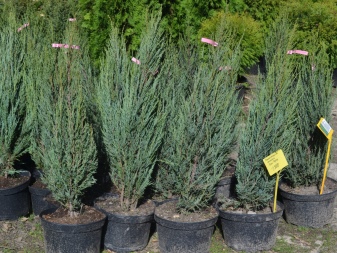
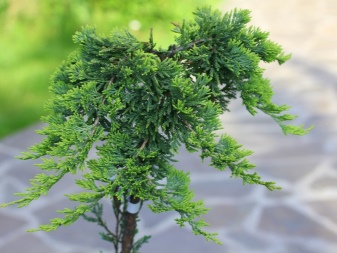
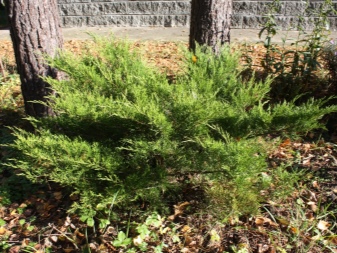
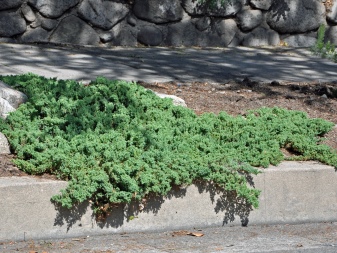
In Russia, such a variety as Horstmann deserves attention. An unusual appearance creates a curved trunk, reaching a height of 4 m. Weeping shoots develop on the trunk, and the top droops. Already from the description it is clear how the culture is suitable for non-standard, spectacular-looking garden compositions. Horstmann grows in height up to 0.15 m per year.
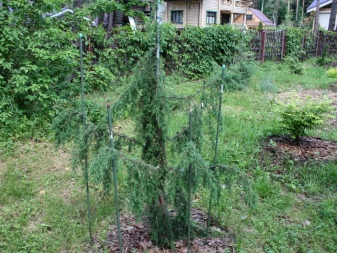
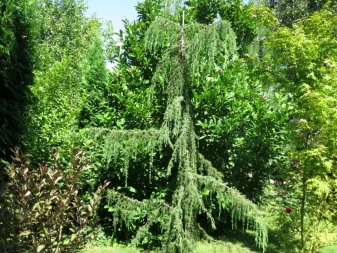
This plant does not grow well in the shade. Repanda subspecies does not grow above 0.3 m. On the other hand, it is characterized by active expansion in breadth. Another typical feature is the elongated, curved needles of a bright green color with a silvery note. The branches are not too thick and, moreover, thick. Repanda can easily endure severe frost, but dry air is destructive for this culture.
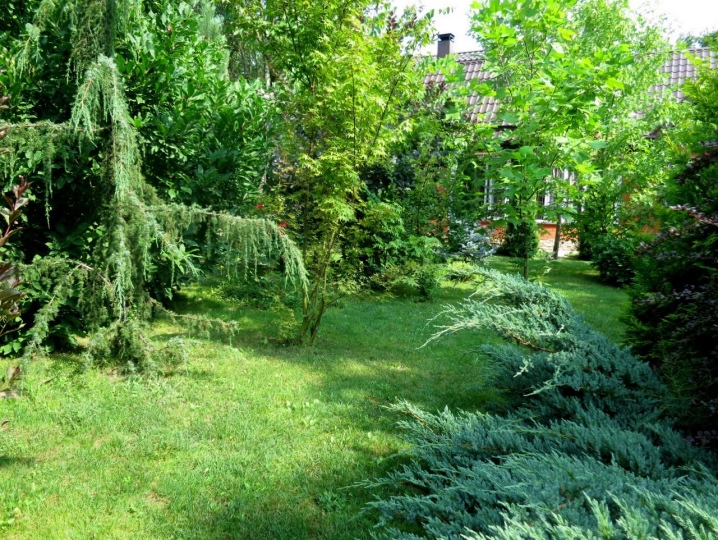
Vertical (with a very narrow pyramidal crown) Arnold juniper topped with a sharp tip... The plant is characterized by a vertical arrangement of the branches of the skeleton. Large needles are painted in rich green or silvery-blue tones. The highest Arnold height can be 2.5 m. The annual growth limit is 0.1 m.
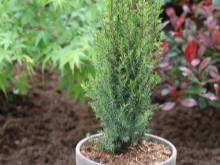
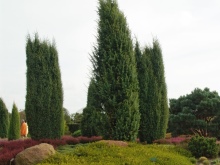
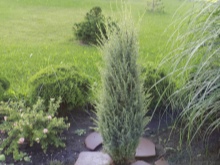
As for the virgin junipers, they also differ in variety. Among them there are trees of different heights, and horizontal shrubs of all kinds.
The shades of the needles also vary flexibly. Almost all virgin junipers:
tolerate frost;
able to survive drought;
do not impose special requirements on the composition of the land.
At the same time, excellent development of the root system is invariably noted. With its numerous lateral branches, it directly “grabs” any ground. The dark blue cone berries increase the decorative effect of the plants, even when the flowering buds fall off. Among the Virginian junipers, the Gray Owl shrub is especially distinguished. It is squat and forms a spreading crown of irregular geometric shape.
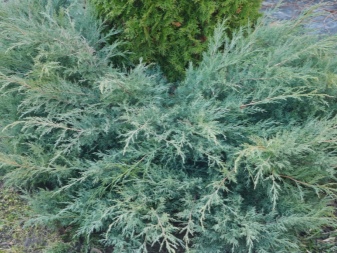

A characteristic feature of the subspecies are blue-gray cones with a blue tint. And here Glauca is a fast growing juniper... During the year it grows up to 0.2 m. It is also a tall plant that rises up to 7 m. The column shape is characteristic of it.
The blue-green needles of Glauca in the summer take on a bronze color in the cold season. Pine berries grow abundantly and are bluish-white in color. Despite its resistance to cold and drought, a significant disadvantage is the loss of rich colors during shading. Also noteworthy is the Cossack juniper (botanical name - Juniperus sabina)... This type is unpretentious, can be used in single and group planting equally.
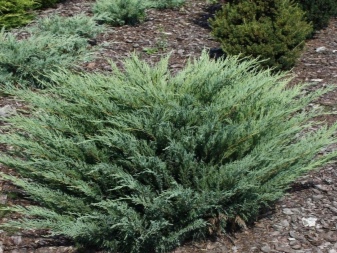

Cossack juniper takes root rather quickly, but needs good lighting. In many ways, this requirement is compensated by the resistance to air clogging. Scale-like needles of "Cossacks" often emit a strong aroma. The cones of this species are inedible, and in some of its varieties they are even dangerous to health.
Landscape designers actively use such a variety of Cossack junipers as Variegata. These are relatively small creeping bushes up to 0.8x1.5 m in size. The ends of the branches are mostly curved. The tips of the branches are light cream in color. The needles have a pleasant aroma, and the substances they release decontaminate the air.
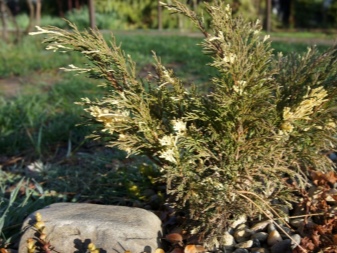
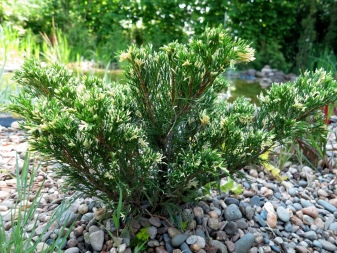
The variety needs good lighting, systematic watering and spraying.
Rockery Gem is a squat shrub with a wide, asymmetrical arrangement of branches. The older the plant, the closer they are to the horizontal. The needles are colored in gray-green or saturated blue-green tone, differ in density. The growth of the tree is not only slow, but also uneven, but the culture does not impose high demands on the soil. Crown pruning is not a problem; the main niche in landscape design is ground cover plants.
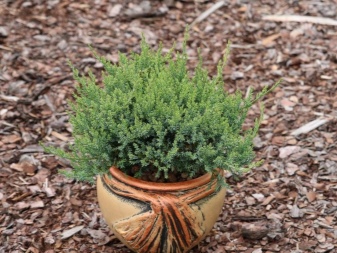
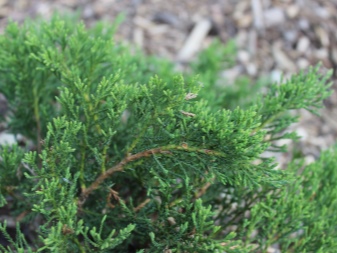
Solid juniper also deserves attention. This is a tree that reaches a great height and has a dense pyramidal crown. Hard juniper is covered with green needles, which have a light yellow color. Shoots of a triangular shape are characteristic, needles of 0.015-0.03 m in length grow on them. It should be borne in mind that this type of plant can vary greatly in different environmental conditions.
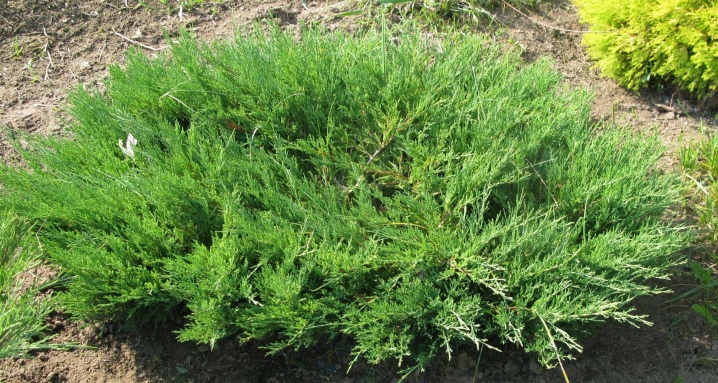
In household plots and in cities in general, solid junipers are distinguished by a narrow columnar or oval shape. Male trees are distinguished by their denser crown. A juniper growing on a sandy or rocky seashore becomes a creeping plant. But if it is propagated vegetatively, then a full-fledged shrub is formed. The gray-brown bark is typical for young and mature plants, but in old age it gets a red-brown color.
Solid juniper inhabits almost the entire Eurasian continent. This plant grows more often in dry, sandy, well-drained soils. Mostly it can be seen one by one, groups of juniper trees grow less often. Despite its wide geographical range, solid juniper is listed in the Red Book.
As for the round shrubs, they are widely used in green hedges.

Returning to the Cossack juniper, it should be noted that it has a very different look. There are plants with emerald, blue, dark green or yellow tips. The difference may relate to geometry, dimensions, resistance to weather conditions. Yellow tips can also appear in the Gold Cone variety. This plant was bred in Germany and has a narrow columnar or pyramidal crown.
The height of the plant can reach 2-3 m, and the width is 0.6 m. A characteristic feature of the variety is its rapid development, the annual growth is up to 0.15-0.2 m. Shoots rush upwards. The bulging tips of the shoots add charm to the crop.

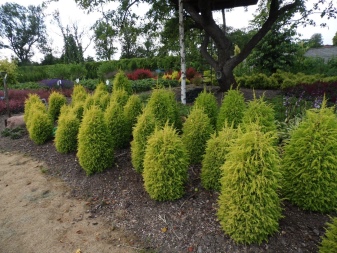
Climate zone accounting
Growing juniper in the Moscow region is not difficult. It is only necessary to take into account the frost resistance of a particular plant. The specimens imported from abroad do not always tolerate the cold well enough. In the north of the Moscow region, the Blue Alps and Gold Kissen varieties give excellent results. You just need to buy them in professional nurseries, because only there they are adapted to the current climatic conditions.
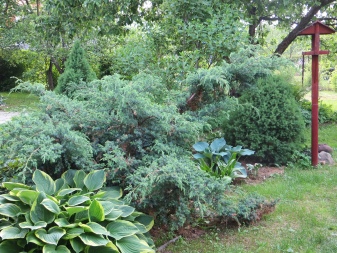
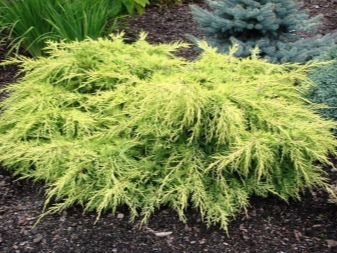
For the 4th climatic zone, the "Horstman" variety may also be suitable. However, this plant rather has a weeping shape. Elongated, spreading branches can break under snow load. We'll have to put on a kind of "crutches". In the Leningrad region, you can safely plant rocky, Cossack and Chinese species of junipers, you will only need to shade them from the sun in the spring.
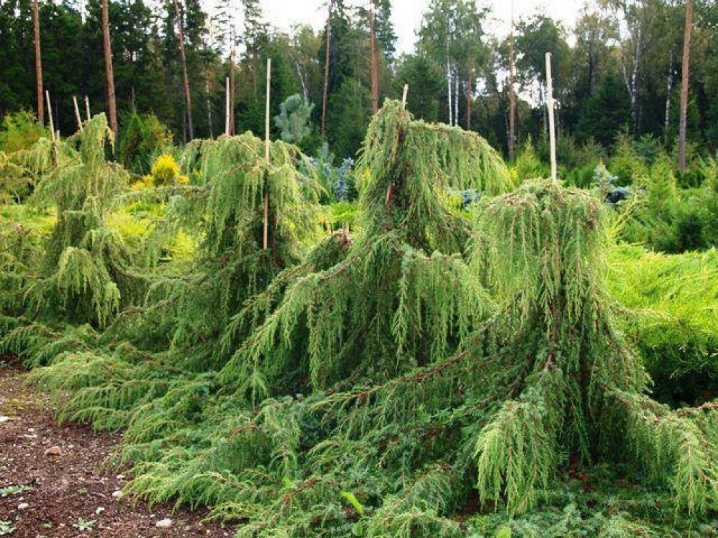
Pick-up location
Having familiarized yourself briefly with the variety of juniper varieties and with which ones are suitable for harsh climates, it is time to find out now how to choose a suitable landing site. Light-loving varieties of this plant should be planted in open areas with good lighting. It is recommended to check that the earth is composed of loamy or sandy loam light rocks. A prerequisite for success is the nutritional value of the soil and a high level of moisture.
Additional care must be taken to drain the soil.

Junipers can grow without problems in barren land and even in drought. However, stagnant water in the ground is extremely dangerous for them. Almost all types of juniper require good lighting and are severely affected when planted in the shade. But there is one exception to this rule - the shade-tolerant common species. In nature, this plant settles in the underbrush, so it tolerates poor light well.
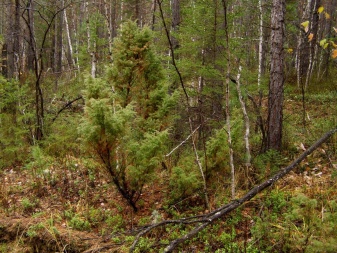
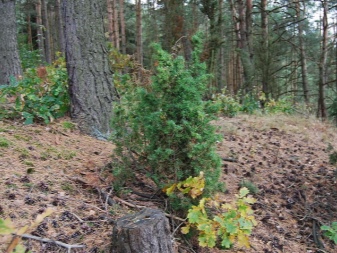
Other requirements for the place of disembarkation:
open space;
absence of large trees or bulk structures near;
compliance of the soil with the “requests” of a particular variety.
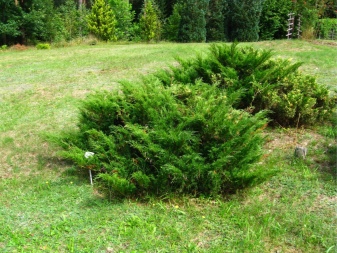
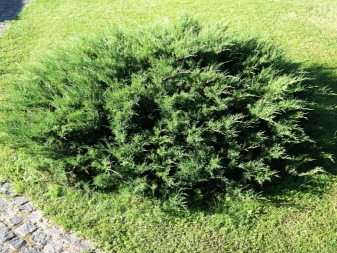
Compatibility with other plants
When choosing a site for planting an ephedra, you need to remember which plants it is compatible or incompatible with. To emphasize the grace of juniper plantations, heather and dwarf barberry of any kind are used. Spireas of yellow or orange color can be companions of coniferous culture. This combination is recommended for:
sunny glades and lawns;
shores of reservoirs;
flower beds.
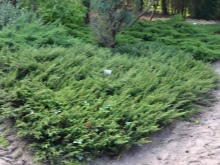
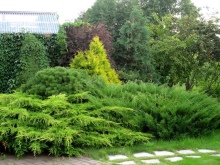
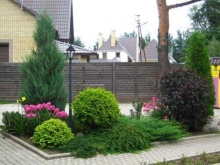
Planting birch next to junipers is somewhat rash. Its powerful roots will consume a lot of water, and the ephedra will be withered. It is also necessary to remember its own influence on fruit trees. Pear and juniper are very bad neighbors because they are affected by the same fungi. It is enough to infect one plant, and soon the infection will spread further.
You should not place your juniper plantings next to an ash tree that blocks the growth of both trees and shrubs.
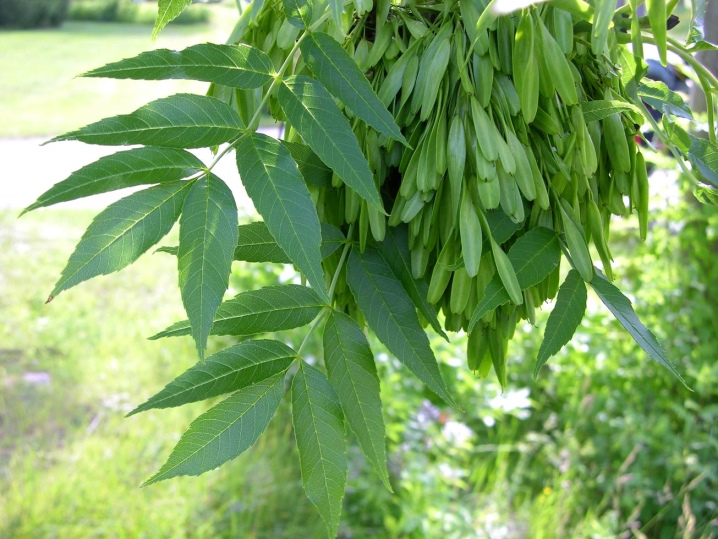
When choosing a place for juniper trees in an orchard, you should keep it away from the apple tree. Rowan and hawthorn will also become bad neighbors. If there is no choice and in any case you have to plant conifers next to an apple or pear, all plants are treated with fungicides. Primary processing is carried out as early as possible, long before the beginning of flowering.

Landing features
In order not to suffer, choosing suitable combinations, some farmers prefer to simply plant juniper in the form of a tapeworm. But in any case, growing it in the country or near the house will give a good result only if the basic agronomic requirements are taken into account. Seedlings with open roots are used only in spring, during April and May. You should look not only at the calendar, but also at the actual weather. A good result can be given by planting at the end of August or in the first September decade.
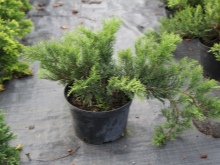
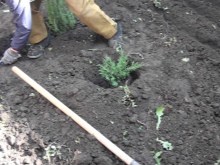
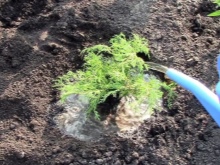
However, planting a tree at such times is possible only in an exceptional situation when spring planting was not possible. In autumn, it is advised to choose periods with little rainfall, because they have a detrimental effect on the seedling. If it is clear in advance that there are no clear dates for planting, you need to choose seedlings with a clod of earth. But they are also planted in open ground no later than October 28-30, and with the early onset of cold weather, this period is still postponed.
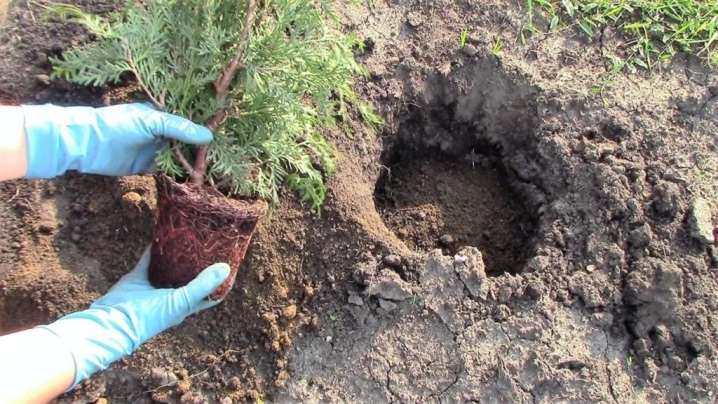
It is recommended that seedlings be selected from a maximum of three or four years of age. It is necessary to purchase planting material only in large farms with a good material base.
Experts advise to immediately check whether the color of the needles and other external features of the juniper correspond to the parameters of a certain variety or hybrid. You should not experiment with seedlings that:
the needles turned brown;
branches were at least partially exposed;
the top has dried;
there is no young growth;
clear signs of disease or pest infestation are found.

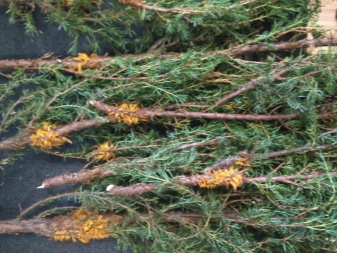
The disembarkation of large-sized plants should be carried out by qualified specialists. The planting itself is carried out in a mixture of peat with coniferous soil and coarse sand. The sand should be disinfected by heating it in the oven. After that, it settles for about 30 days, so that the normal microflora has time to recover. After mixing the components, a homogeneous mass should appear.
When the prepared mixture is laid out, it is mulched with peat and sawdust. When planting, it is unacceptable to fertilize the juniper with manure. This will result in root burns and plant death.

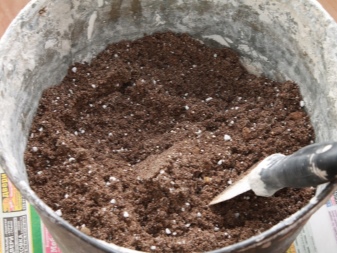
It is also forbidden to loosen the soil around the seedling. Only mulching with coniferous forest land is allowed.
Gaps of at least 1.5-2 m are left between large plants. The shrub forms of the juniper should be separated by at least 0.5 m. The size of the pit is selected in accordance with the dimensions of the seedling and a clod of earth. When planting virgin juniper species, a small amount of compost is added. The land for the Cossack type of wood is saturated with dolomite flour additives.
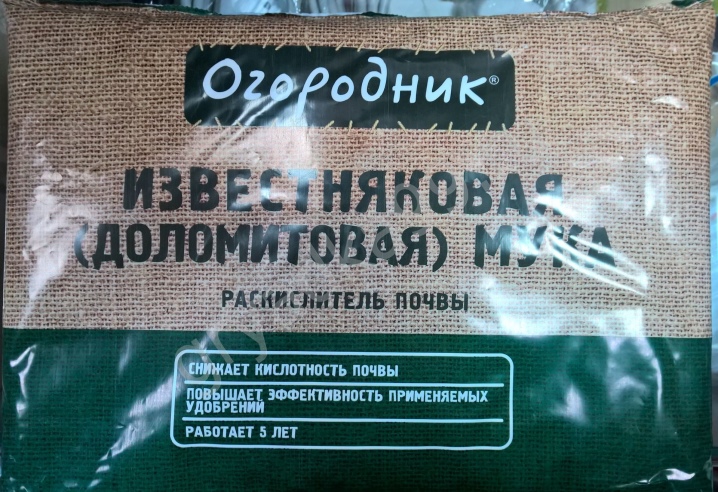
Some species (including Daurian) can get burns. They are planted only where there is light shading in the afternoon. To drain the planting pits, use:
expanded clay;
broken brick;
gravel.

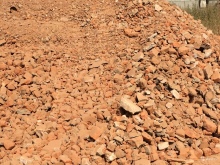
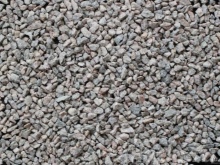
Care rules
Watering
Standard agricultural practice for open field cultivation of junipers does not imply the need for frequent watering. But the greatest need for water is experienced by young shoots and dwarf plant varieties. If the weather is damp, no special watering is required.
In normal summer weather, plants are watered twice during the first month after planting. Then watering is carried out at intervals of 20-30 days.
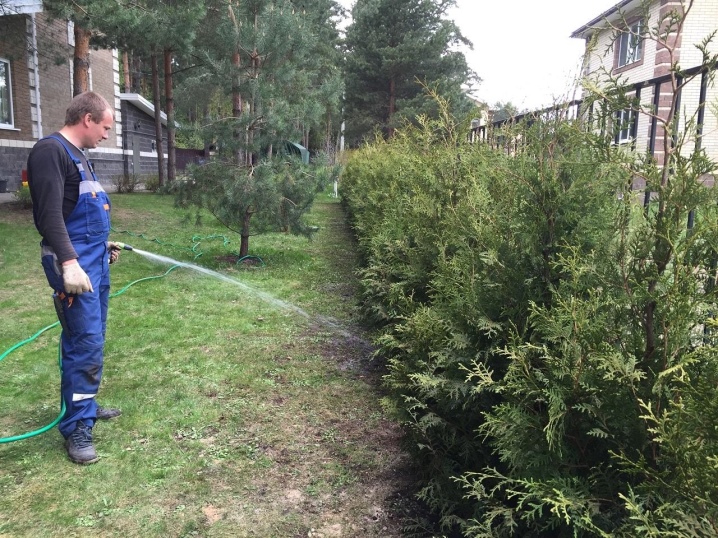
To make the conifers on the site feel better, you need to sprinkle the crown. This will allow:
get rid of dust and dirt;
improve the smell of needles;
activate the release of phytoncides.

Like all other plants, junipers need to be watered either in the early morning or late evening hours.Strong, healthy bushes and trees in adulthood are watered three times during the growing season. Adequate moisture can accelerate the development of culture and increase the brightness of the needles. For 1 tree, 10 to 30 liters of water are consumed. Even drought (if it is not too extreme) is tolerated by junipers well, and it is better to limit water consumption, rather than waste it thoughtlessly.
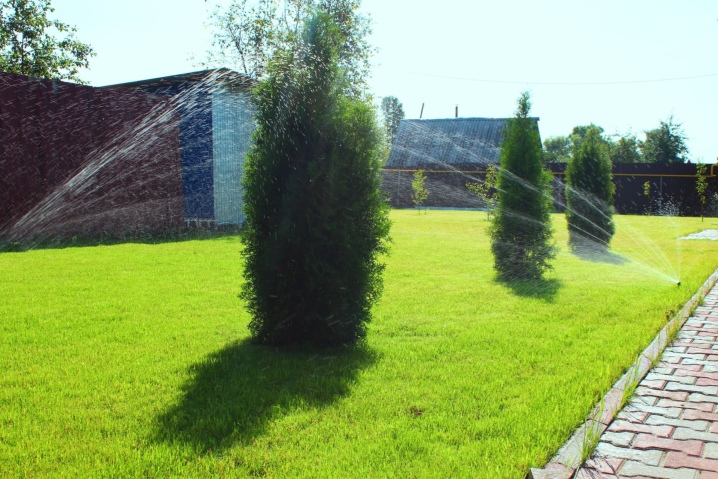
Mulching
It is almost impossible to care for such plants without the use of mulch. To maintain normal soil moisture and reduce the frequency of watering, you need to put permeable materials under the mulch. Lutrasil works very well. In addition to retaining moisture, it also prevents weeds from forming. In the spring, the mulch must be moved away from the trunk, because otherwise the trunk will become damp and start to rot.


Top dressing
Wild-growing juniper develops on soils poor in minerals. Only the scaly and Chinese species stand out. But you need to understand that varieties of modern breeding have much higher requirements for feeding and filling planting pits... In the first 24 months, the planted substrate should be enough for the development and rooting of seedlings. In the third year, they begin to apply complex fertilizer with organic and mineral components.
If the drug "Stimovit" is used, then 0.1 l of solution diluted in 4 l of water is enough for root feeding. Granular fertilizers are best suited Ava, Royal Mix.
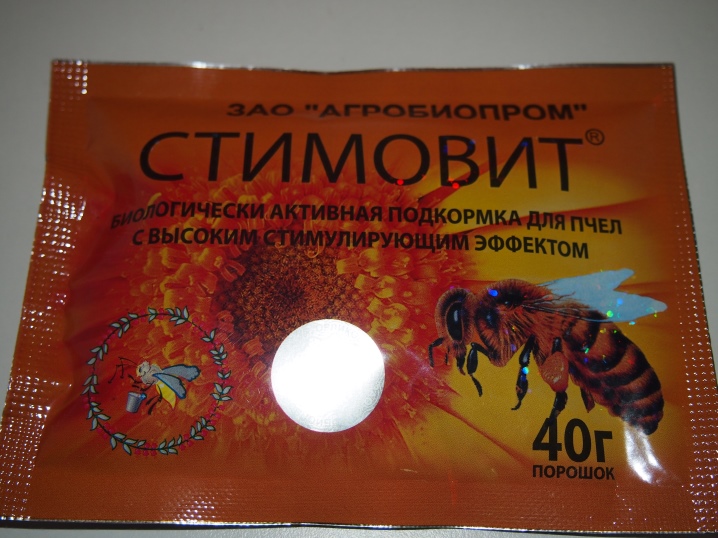
They contain the necessary set of trace elements, primarily magnesium and iron. Such supplements will help avoid chlorosis and other ailments. For your information: the same two preparations are suitable for other coniferous crops.
Pruning and shaping the crown
You can meet both round and spherical junipers very often. After all, it is much easier to shape it than spruce or pine. Adjusting by trimming allows you to get rid of:
branches growing at an unnecessary angle;
shoots of unsuitable color;
too weak or too strong shoots.
In junipers on the trunk, a disproportion of crown development may develop. This is not only ugly, but also threatens to break off the scion. Competent pruning successfully solves this problem as well. If a species or variety is naturally "disheveled", it cannot be artificially corrected.
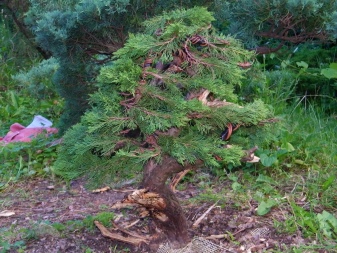
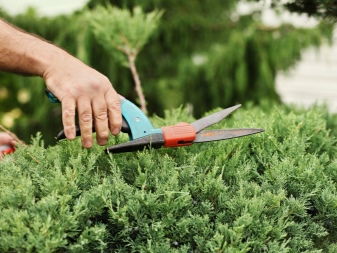
They try to make the slices as inconspicuous as possible; it is best to take the pruner in the last decade of June.
Formative pruning of living juniper hedges should be done by trained professionals. Only they can take into account both the peculiarities of plant development and the requirements of landscape design. Juniper cannot be pruned in the first year of life. On the eve of the procedure, the plant should be sprayed with water. As always, a well-sharpened tool is used.
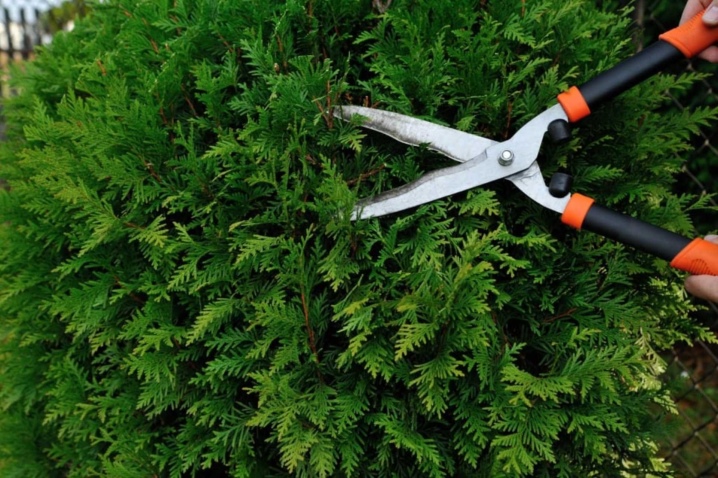
A separate topic is caring for junipers in the summer on the balcony. In this case, it is required to provide the plant with maximum heat. At home, junipers are fertilized with multicomponent specialized mixtures. They must be brought in in the spring and in June. Since there is not too much soil in the container, it is necessary to limit the fertilizer to half the fertilizer recommended by the manufacturer.
Taking care of the ephedra, at home, the earth must be constantly kept moist. But it shouldn't be wet. You need to prune potted plants once in the spring and once in the summer. Pruning is needed if the plant has thickened or damaged branches have appeared. As with large trees or bushes, you need to cut as carefully as possible.
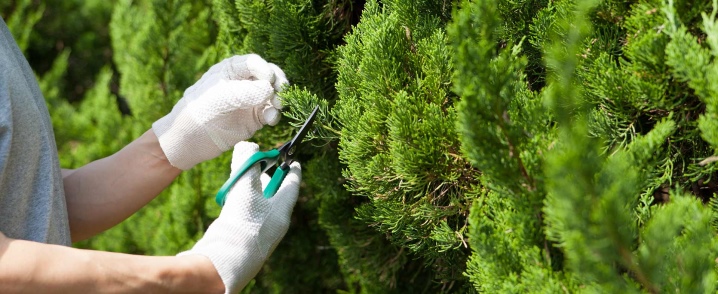
Reproduction methods
The simplest option for breeding a juniper is seed reproduction. But shoots can be expected with this method only a year after planting. To ensure proper germination, seeds are stratified. You need to pick the darkest cones. It will not work to breed the plant with seeds from light berries, because they are not ripe enough there.
The fruits will have to be soaked and rubbed.The extracted seeds are placed in a weak vinegar solution for 30 minutes, and then washed with clean water.

It is advisable to mix them with wood ash, grind and hold for about 20 days. Landing in open ground is carried out only under the condition of mulching with peat or humus. When germination begins in spring, the seedlings need to be insulated.
They try to plant the most valuable varieties of juniper by grafting. The place where the scion connects to the stock is covered with polyethylene. This method does not require additional steps, but the probability of the scion engraftment is small. The most promising methods of reproduction of juniper is the use of shoots. Cuttings are cut in the first ten days of February (for spring breeding), or from June 1 to 10 (for autumn).

This is due to the fact that the roots from the branch will develop in 20-25 days. And they will be able to take root only after another 2 months. Cuttings in summer and autumn give worse results than in spring.
Planting material is taken from the upper parts of the plant and is carefully monitored so that it is not covered with tree bark. Creeping varieties are propagated by cuttings taken from vertically growing specimens.
Doing work in the dark or in cloudy hours helps to avoid damage to the mother plant and the cutting itself. The length of cut shoots is up to 0.25 m. Cut branches cannot be stored, except that they can be put in water for 2-3 hours. The planting mixture is prepared from an equal amount of peat and humus. The cuttings are planted at approximately 1 m intervals, avoiding areas with direct sunlight.
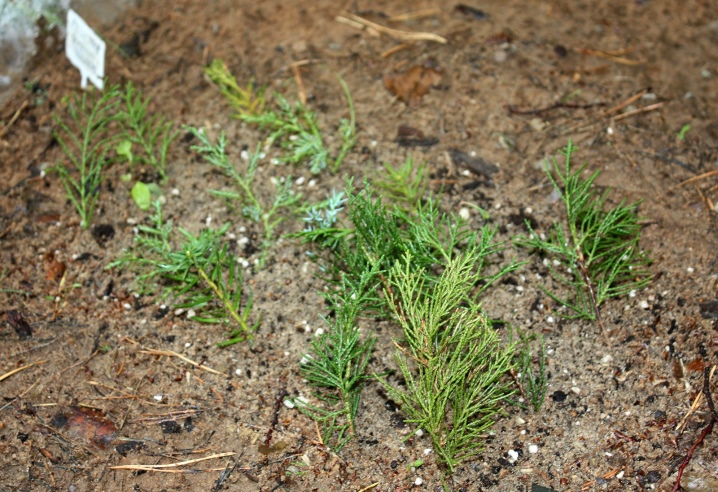
Diseases and pests
Juniper, despite all its unpretentiousness, may well get sick. The main danger for him is microscopic fungi. Due to Alternaria, the needles crumble, but this will happen only after the color of the crown changes. It turns dirty brown and covered with a black coating. To combat Alternaria, you can use "Abigu-Peak" or copper oxychloride.
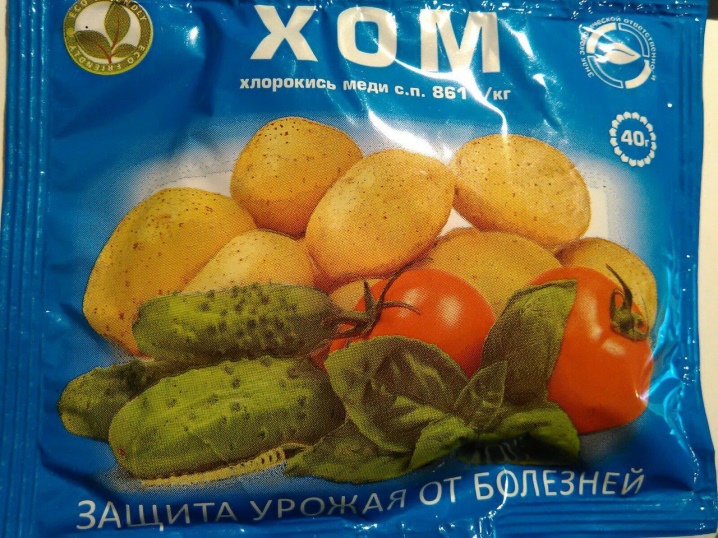
A manifestation of the brown shute is the yellowing of the needles and their covering with a "spider web" bloom. You can fight it by pruning the shoots. But if the disease has spread greatly, you will have to dig up and burn a bush (tree), after which the earth is disinfected. Juniper cancer causes the color of the bark to change. Soon it will dry out and crack, and after a while the plant will die.
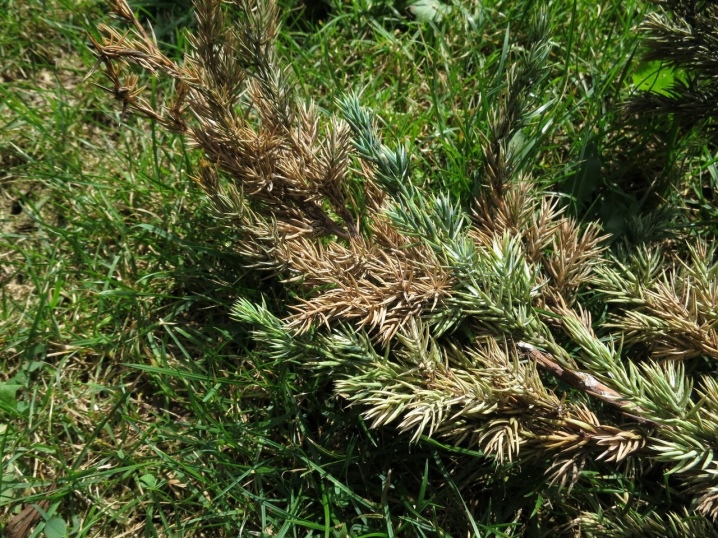
Fusarium is also a serious danger. It spreads through planting material, most often affects young shoots and specimens with weak immunity. The risk increases when growing crops for:
dense clay soil;
areas with low light;
land with high standing groundwater;
lands with stagnant rainfall and melt runoff.
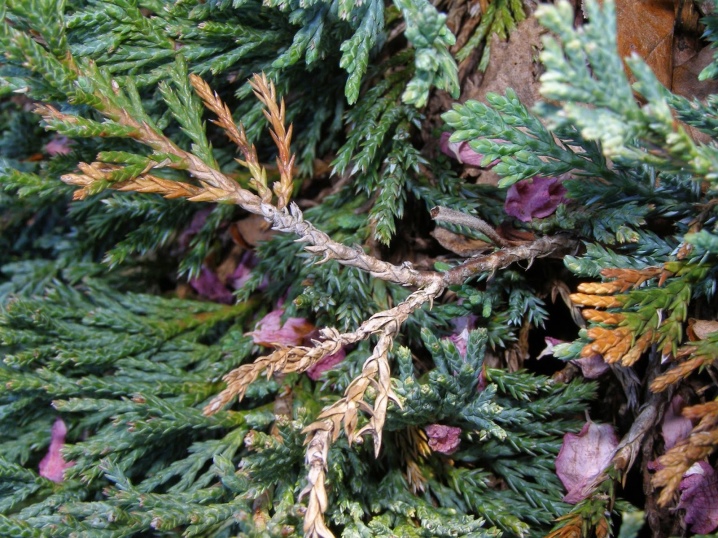
Of the insects for junipers, the most dangerous is the scale insect. You can see its larvae in any part of the crown. Following the suction of the juice, immunity worsens, and the punched holes and passages become "gates" for the fungus.
Insect control is carried out with systemic insecticides. Processing is carried out both on the crown and on the ground, twice or three times per season with an interval of 14 days.
The funds are periodically changed so that the pests do not get used to them. Juniper aphid also deserves serious attention. It is fought with a soapy spray solution. Of the branded compositions, Decis and Calypso deserve attention.
The squid mite can be suppressed:
Aktellikom;
"Nurelom-D";
"Caesar".
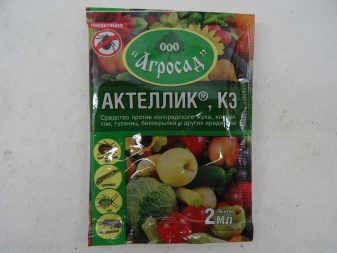

Possible problems
If the juniper turned brown after winter, and then the needles fell off, there is physiological drying out due to lack of moisture in February and March. This can be prevented by winding with spunbond or other similar material. Horizontal junipers, so that they do not suffer from heavy snowfalls, are shaken off, and vertical junipers are tied up. To avoid drying out in an unfavorable year, it is advisable to plant plants in light partial shade.If the juniper has grown a lot, it remains to either plant it, or actively cut it.
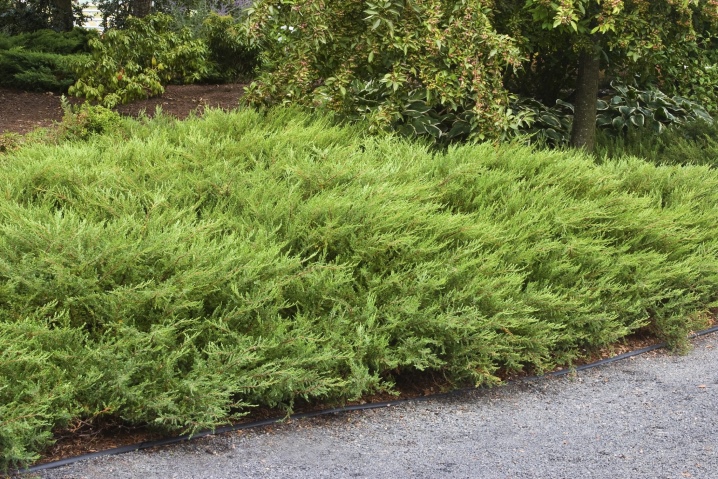
Tips for Beginners
It is not necessary to wait for warm weather when disembarking. Enough to just melt the snow. Beginners should pay attention to what the acidity of the earth should be. An alkaline reaction is needed for an ordinary, Cossack and several Central Asian species. Dolomite flour or slaked lime helps to increase alkalinity.
Peat and sand are used to acidify the earth. Another option is to mulch the ground with peat chips and shavings.

Professionals can try to plant an adult juniper in winter, but such experiments should only be carried out with proper experience. At the usual time, 100-120 minutes before planting, the earthen lump must be moistened. If you want to take a plant from the forest, you need to choose young specimens with an underdeveloped root system.
Use in landscape design
You need to know how to arrange a composition on a flowerbed with a juniper. The best choice in this case is a miniature Cossack juniper. It can be combined with hydrangea, for example. Juniper trees and bushes are also worth growing to decorate alpine hills. As for the garden in the English style, it is recommended to use pyramidal and columnar plants.
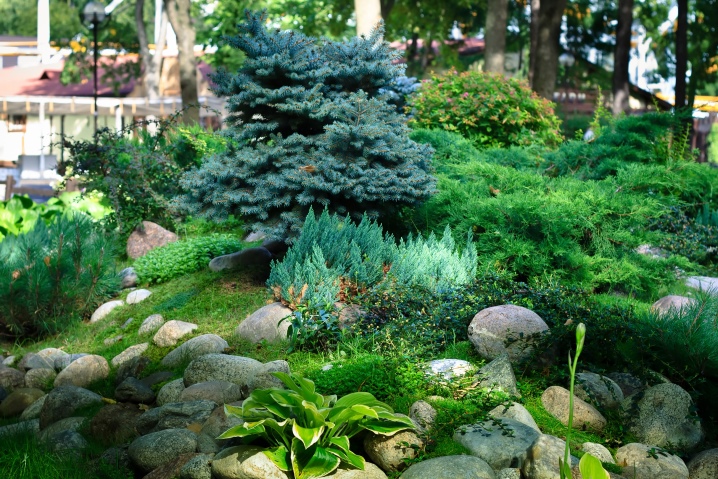
Experienced decorators arrange junipers along the edges of the paths. But they can also become the center of the entire composition, its logical filler. As for living juniper hedges, the most unusual options are formed from plants of medium height. Dwarf bushes and very tall trees look much more mundane. The common juniper finds 3 uses in landscape design:
in park areas and garden corners;
in the design of the local area;
in decorating large garden plots and summer cottages.
The original step is to plant junipers instead of the usual lawn. Yes, running on such a lawn is impossible. However, it will allow you to enjoy a beautiful view and does not need strenuous careful maintenance.
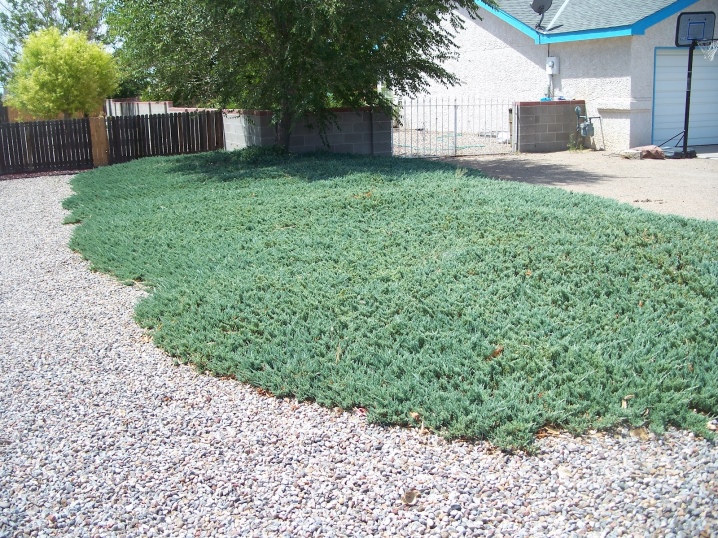
From junipers, you can create not a simple lawn, but a space decorated in a fashionable version of patchwork. Another original option is to plant it along the fence.
Even the most ordinary-looking wood, metal or concrete surface will look more interesting and pleasant thanks to the green frame. But junipers can also be used in rockeries. Dwarf varieties with a dense crown structure are especially good. But the horizontal varieties of the plant are better suited for alpine slides. In combination with other conifers, deciduous shrubs, juniper trees and bushes can be used in the formation of decorative concessions.
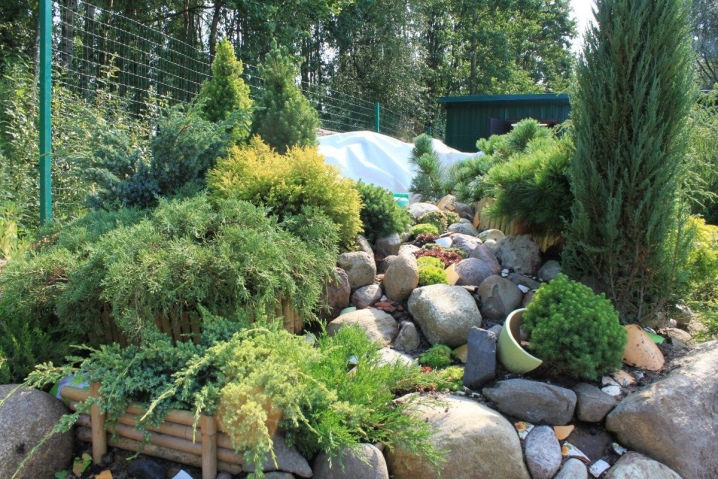
This solution will be optimal for a Japanese garden. On the retaining walls and on the edges of high rockeries, mostly ordinary juniper is planted. Rock surfaces are often decorated with dwarf plants with a low growth rate. Along the way, some types of conifers allow you to strengthen the soil and avoid it shedding. For container and pot crops, varieties are better suited:
Nana;
Expansa Variegata;
Ice Blue;
Mother Lode.
For varieties and types of juniper, see below.



































































The comment was sent successfully.